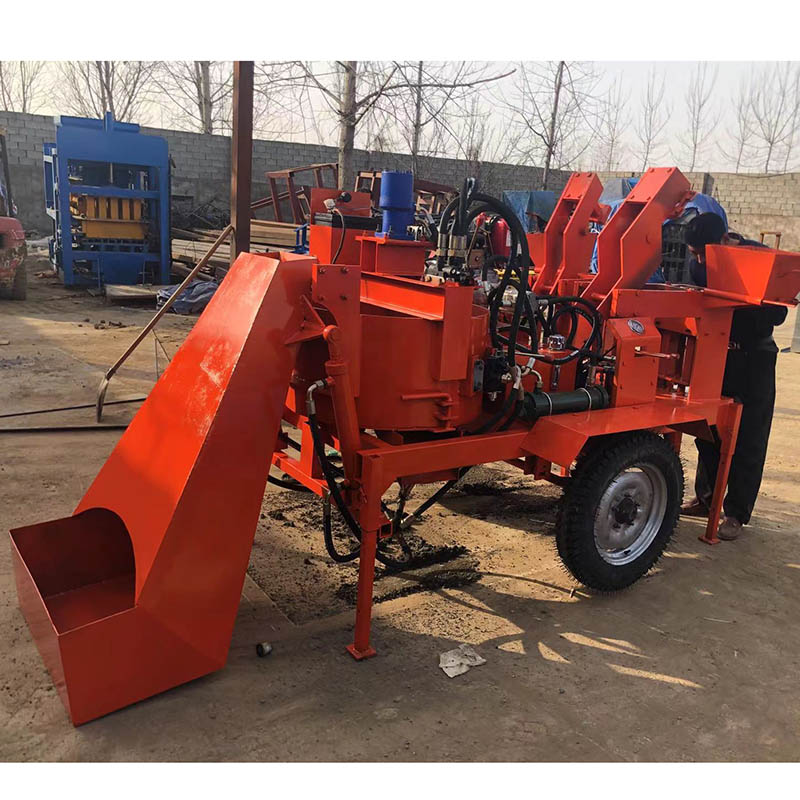
Image source:Aiwei block machine
Introduction
Community empowerment lies at the heart of sustainable development, fostering self-reliance, economic growth, and social cohesion. In the context of Canadian towns, brick making machines have emerged as powerful tools for community empowerment, igniting economic opportunities and social progress. This article delves into the multifaceted impacts of brick making machines on Canadian communities, exploring how these machines contribute to local economies, job creation, skill development, and a strengthened sense of identity.
1. The Essence of Community Empowerment
Community empowerment involves enhancing the capacities of individuals and groups to shape their own lives.
- Local Solutions: Empowered communities are better equipped to address local challenges and opportunities.
- Sustainable Development: Empowerment aligns with sustainable development goals by fostering self-sufficiency.
2. Brick Making Machines as Agents of Change
Brick making machines catalyze community empowerment by offering avenues for economic and social progress.
- Entrepreneurship: Mechanized brick production opens doors for local entrepreneurs and small businesses.
- Job Creation: Operation, maintenance, and bricklaying generate employment opportunities within the community.
3. Economic Growth in Local Economies
Brick making machines contribute to local economic growth through various channels.
- Multiplier Effect: Brick production stimulates other local industries, such as transportation and materials supply.
- Revenue Generation: Local businesses benefit from supplying materials and services to brick-making enterprises.
4. Skill Development and Capacity Building
Brick making machines play a pivotal role in enhancing community skill sets and capacities.
- Training Programs: Learning machine operation, maintenance, and bricklaying cultivates new skills.
- Entrepreneurial Spirit: Skill development nurtures an environment conducive to local business initiatives.
5. Localized Supply Chains and Reduced Dependency
Brick making machines promote self-sufficiency within Canadian towns.
- Reduced Imports: Local brick production minimizes the need to import construction materials.
- Resource Utilization: Machines utilize locally available clay and materials, reducing external dependencies.
6. Strengthened Social Fabric and Cultural Identity
The presence of brick making machines fosters social cohesion and a sense of belonging.
- Community Engagement: Brick-making enterprises involve local residents in meaningful ways.
- Cultural Resilience: Brick production honors local architectural traditions, preserving cultural identity.
7. Case Studies: Transformative Community Empowerment
Real-life examples exemplify how brick making machines drive positive change in Canadian towns.
- Youth Employment Initiatives: Brick-making projects create opportunities for youth employment and skill development.
- Empowering Indigenous Communities: Mechanized brick production supports economic self-sufficiency in Indigenous regions.
8. Women’s Empowerment and Gender Equality
Brick making machines contribute to women’s empowerment and promote gender equality.
- Breaking Stereotypes: Women participate in various aspects of brick production, challenging traditional gender norms.
- Economic Independence: Income generated from brick-making empowers women economically.
9. Collaborative Partnerships for Impact
Collaboration between governments, NGOs, and private sector entities amplifies the impacts of brick making machines.
- Community-Driven Projects: Partnerships ensure initiatives are aligned with community needs and aspirations.
- Resource Access: Collaborative efforts provide access to resources, funding, and technical expertise.
10. Long-Term Sustainability and Future Prospects
The long-term sustainability of community empowerment through brick making machines hinges on continued collaboration and innovation.
- Capacity Enhancement: Continuous skill development ensures the community remains competitive.
- Innovation: Research into more efficient kilns and environmentally friendly materials furthers sustainable practices.
Conclusion: Empowering Communities for a Brighter Future
Brick making machines are more than just tools of construction; they are instruments of empowerment, fostering economic growth, social cohesion, and skill development within Canadian towns. By placing the power of production into the hands of communities, these machines catalyze a transformative ripple effect that extends far beyond bricks themselves. As Canadian towns strive for self-reliance, economic vibrancy, and collective progress, the story of brick making machines serves as an inspiration—a testament to the potential of technology, collaboration, and community empowerment to shape a brighter future for all.
